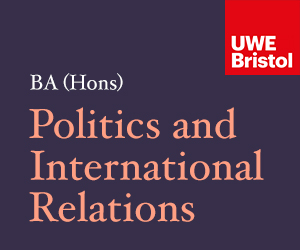How Appealing are CBRN Weapons to Terrorist Groups?
Chemical, biological, radiological and nuclear (CBRN) terrorism is often portrayed as one of the greatest threats facing the world. But to the rational terrorist, acting with concern to the strategic considerations of external support, possible retaliation and mass-casualty outcomes, CBRN weapons are of limited appeal.
What is the terrorist threat in cyber-space?
The typical approaches to warfare, force, offence, defence and deterrence, do not necessarily cross over into cyber conflicts, be they for cyber warfare or countering cyber-terrorism. The world of network interactions changes the rules of the game, where the attackers can more easily remain anonymous, and the targets can be anything that is on an open network.
Radical Islam: both a product of globalisation and a serious challenge to it?
Radical Islam has come to play a very significant position within the international realm. It has taken terrorism, which was always a weapon of the weak, though usually with little perceived effect, and created what can be seen as a quite considerable challenge to globalisation and the international community.
On Hamas: A fresh analysis of an old ‘problem’
The dominant Western rhetoric enforces the portrayal of Hamas as a static organisation, its violent and ‘fanatical’ behaviour rendering it as innately characteristic while contradictory evidence is marginalised as irrelevant. This myopic approach has failed to understand Hamas, and for peace ever to be achieved this paradigm must be broken.
The History, Politics and Ideology of Hamas
Hamas ultimately wishes for the end of Israel and the liberation of Palestine, but it thinks almost exclusively in short term goals and is open to the possibility of entering into negotiations. The dominant view in Israel seeks to stop Hamas getting any more of a foothold in Palestine than it already does, doubting the sincerity of its elements of moderation.
What Motivates Islamic Political Organisations in the Middle East?
The fact that Hamas and Hezbollah have participated in elections does not necessarily mean that they have abandoned Islamist ideology. The very term ‘Islamist’, or at least its application, is highly problematic. Furthermore, all Islamist organisations are very different, and are constrained by the institutional rules of participation to differing degrees.
What does the Mafia success concept teach us?
Transnational organized criminal groups were ever since a darling of the sensation seeking media. But since the attacks of 9/11, criminal networks were moved even further into the spotlight, as the sources of income for the historically most deadly and horrific generation of global terrorism.
The Evolution of Terrorism as a Tool of Political Change
Terrorist organizations have become more effective in delivering fear to global populations. It is not only globalization that has helped terrorist groups operate more efficiently, but also their inherited nature of a constant process of adaptation, ingenuity, and incrementalism when faced with new grand strategies.
Why has a negotiated settlement been possible in Northern Ireland and not the Basque conflict?
A case can be made that a negotiated settlement has been possible in Northern Ireland due to an inclusive political strategy and acceptance of compromise, whereas the Basque situation has not been conductive to a settlement due to the government pursuing an exclusionary position towards ETA and radical nationalist political groups.
Has the war on terror been an appropriate response to terrorism?
Terrorism has existed for centuries as a way of creating disruption and fear. Yet, to declare a war against it has created numerous questions as to how to fight this multifaceted idea. Individual groups do indeed hold ideological stances, just as legitimate political parties do, but to brand all terrorism and terrorists as the same would be incorrect.



